PHP 8.3 is the latest version of the popular server-side scripting language, bringing with it several enhancements and features that make the language even more powerful and developer-friendly. Operators in PHP are one of the core building blocks of the language, used to perform operations on variables and values. Whether it's arithmetic, comparison, or logical operations, understanding how PHP 8.3 handles operators is crucial for writing clean, efficient code.
In this guide, we'll dive into PHP 8.3 operators, covering the various types of operators, how they work, and any new updates or improvements introduced in this version.
What is an Operator in PHP?
An operator is a symbol or keyword used to perform operations on one or more operands (values or variables). PHP provides a variety of operators, including:
- Arithmetic Operators
- Assignment Operators
- Comparison Operators
- Logical (or Boolean) Operators
- Bitwise Operators
- Increment/Decrement Operators
- String Operators
- Array Operators
- Type Operators
- Error Control Operators
- Null Coalescing and Ternary Operators
Each operator category serves a specific purpose in manipulating data. Let’s explore each one in detail, with a focus on any improvements or changes introduced in PHP 8.3.
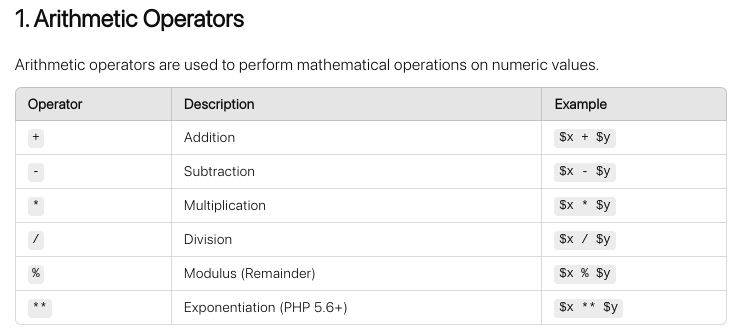
Example:
$x = 10;
$y = 3;
echo $x + $y; // Output: 13
echo $x % $y; // Output: 1
2. Assignment Operators
Assignment operators are used to assign values to variables. The most common one is = but PHP provides several shorthand versions.
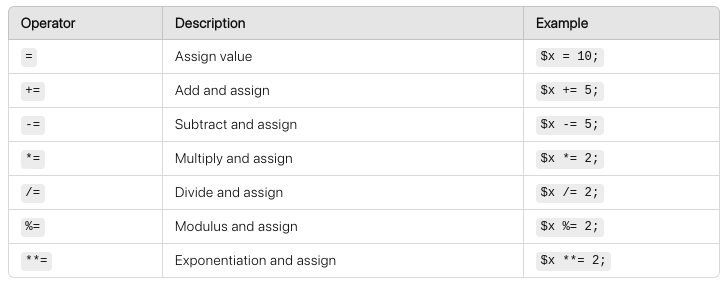
Example:
$x = 10;
$x += 5; // Equivalent to $x = $x + 5
echo $x; // Output: 15
3. Comparison Operators
Comparison operators are used to compare two values. These operators are particularly useful in conditional statements.
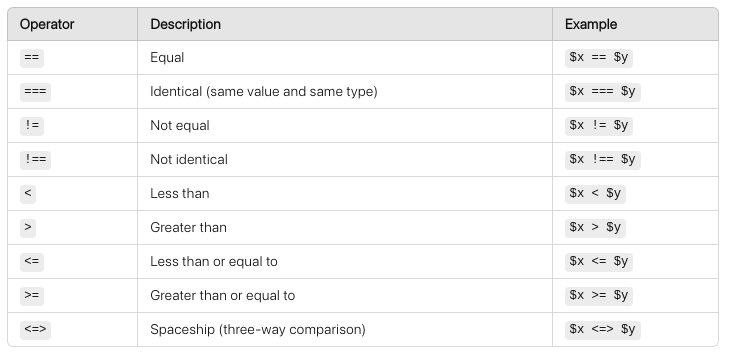
The Spaceship Operator (<=>)
The spaceship operator returns -1, 0, or 1 when comparing two values. It was introduced in PHP 7.0 and remains unchanged in PHP 8.3.
- Returns
-1if$xis less than$y - Returns
0if$xis equal to$y - Returns
1if$xis greater than$y
Example:
echo 5 <=> 10; // Output: -1
echo 10 <=> 10; // Output: 0
echo 15 <=> 10; // Output: 1
4. Logical (Boolean) Operators
Logical operators are used to combine conditional statements and work with boolean values.
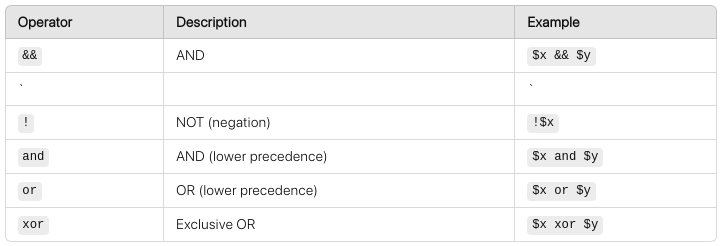
Example:
$x = true;
$y = false;
echo $x && $y; // Output: false
echo $x || $y; // Output: true
5. Bitwise Operators
Bitwise operators allow you to perform operations on bits of integer values. They are useful in low-level programming but can also be applied to certain types of algorithms.
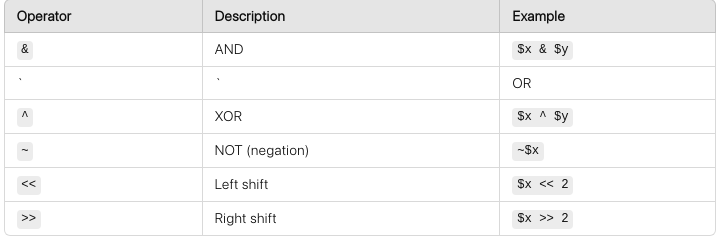
Example:
$x = 6; // 110 in binary
$y = 3; // 011 in binary
echo $x & $y; // Output: 2 (010 in binary)
6. Increment/Decrement Operators
These operators are used to increase or decrease a variable's value by one.

Example:
$x = 10;
echo ++$x; // Output: 11
7. String Operators
PHP supports operators for handling strings.

Example:
$greeting = "Hello";
$greeting .= ", World!";
echo $greeting; // Output: Hello, World!
8. Array Operators
Array operators are used to compare or combine arrays.
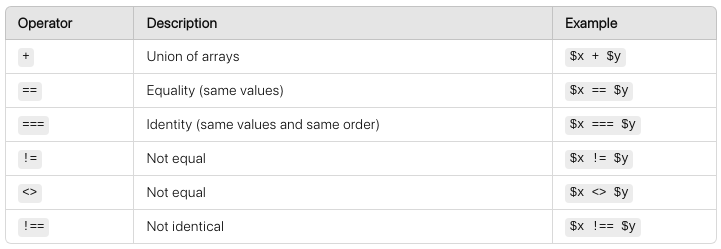
Example:
$array1 = ["a" => 1, "b" => 2];
$array2 = ["a" => 1, "c" => 3];
$result = $array1 + $array2; // Union
print_r($result); // Output: ["a" => 1, "b" => 2, "c" => 3]
9. Type Operators
PHP offers two type operators: instanceof and the new Intersection Types introduced in PHP 8.3. Intersection types allow for more complex type constraints.
class Car {}
$myCar = new Car();
var_dump($myCar instanceof Car); // Output: true
New in PHP 8.3: Disjunctive Normal Form (DNF) Types
PHP 8.3 introduces DNF types, allowing combinations of union and intersection types, making type declarations more flexible.
Example:
function test((A&B)|C $param) {
// Complex type logic
}
10. Error Control Operators
PHP has the @ operator, used to suppress error messages that might be generated by expressions.
@file_get_contents('nonexistent_file.txt');
However, use this with caution, as it can hide important error messages that may be useful in debugging.
11. Null Coalescing and Ternary Operators
The null coalescing operator (??) is used to check if a value is set and not null. The ternary operator (?:) is a shorthand for conditional expressions.
Example:
$name = $_GET['name'] ?? 'Guest';
echo $name; // Output: 'Guest' if 'name' is not set
Conclusion
PHP 8.3 continues to enhance the language's operator features, adding more flexibility and power to handle complex operations and improve type safety. With the introduction of DNF types and other improvements, developers can write cleaner, more concise code. Understanding how to effectively use PHP operators, including arithmetic, comparison, logical, and the newer type operators, will allow you to take full advantage of PHP 8.3's capabilities.
